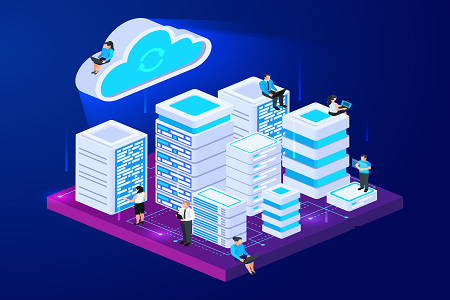Salient IT Services › Business Data Backup Services Folsom
What you need to know about business data backup in Folsom
There are probably very few modern businesses that can function without data. Most are likely to suffer from even a short loss of access to their data and would not even want to think about what could happen if it was permanently lost. Fortunately, this threat can be mitigated by a robust business data backup strategy. With this in mind, here is what you need to know about business data backup in Folsom.
Managing your data backups starts with managing your production data
Data backups are exact copies of your production data, therefore managing them starts with managing your production systems. In short, you need to ensure that only full, accurate and relevant data is entered into your production systems and that it only stays in your production systems for as long as it is actively needed.
You usually need two data backups
The standard rule of thumb is called the 3-2-1 approach. That’s three copies of your data over two media with one copy being kept off-site. In other words, you’ll have your regular production copy plus a locally-held data backup and an off-site data back-up.
Regardless of your standard working environment, the public cloud is usually the sensible place to keep your off-site data backup. Even if you’re in a regulated industry, you are usually fine to store sensitive data in a public cloud as long as it is kept encrypted.
It is increasingly likely to be possible for you to decrypt your data in a public cloud as they are now often capable of complying with the major data protection laws and compliance programs. This means that the public cloud could be an option as a full disaster recovery solution.
You need to appreciate the difference between backing up and archiving
A business data backup is an exact copy of your production data (at a given point in time). An archive is a place to store specific data for specific purposes (usually compliance). Your production system should only contain data you are actively using. Dormant data should either be deleted or archived until it must/can be deleted.

Please note that there is a difference between moving data into slow storage and actually archiving it. If you move dormant data into slow storage in your production systems then it will still be backed up. This means that you will end up with three copies of data which doesn’t need to be in your production systems at all. That’s three sets of storage costs (albeit slow storage) plus bandwidth, plus the time it adds to your data backup process and your data recovery process.
If, by contrast, you either delete it or put it into a proper data archive, then it will not be backed up so you save yourself all of the above. Additionally, you know exactly where it is if you need to retrieve it (e.g. to show to the regulators). You don’t need to restore a whole data backup just to find one file.
Managing storage is key to managing costs
While storage isn’t the only factor in the cost of online data backups, it’s probably the biggest one for just about everyone. The most obvious way to keep storage costs to a minimum is to keep the amount of data you hold to a minimum. This is best practice in any case and is usually a legal requirement when you are dealing with sensitive data (this includes sensitive data collected from your own employees).
The less obvious way to keep storage costs to a minimum is to fine-tune your storage settings. Basically, you want to separate your data into categories and then choose the storage speed which reflects the urgency with which each category of data is needed in production. This will then inform the Recovery Time Objective for the various categories of data and hence the speed of storage used for the different types of data in your online data backups.
Although this process can take a bit of time and effort (not to mention trial and error), it is very much worth it due to the potential for cost optimization.
Managing bandwidth is also important
As with storage costs, the obvious way to reduce your bandwidth costs is to reduce the amount of data you hold, so you have less data to back up and hence less need for bandwidth. The less obvious way to reduce your bandwidth costs is to fine-tune your Recovery Point Objectives or, in other words, the frequency with which you back up different categories of data. In short, the more often data is updated in production, the shorter the RPO should be and vice versa.
If you’d like to speak to a reputable and experienced business data backup services provider in Folsom, please click here now to contact Salient IT.



